Boost Your Intensity In the Gym!

How to release your INNER BEAST
for a superior gym workout
You know the scene in the weight room: A bar is stacked with plates and you can hear them crashing into the ground after each half-rep, paired with grunting that borders on screaming. When you walk past, the floor is covered in sweat and chalk dust, and the lifter is celebrating with his entourage with high fives, cheers, and comments about how he killed it. Sounds intense, right? Yeah, in one way it is pretty intense, but is it the kind of intensity that you want to channel into your own training?
From a training perspective, “intensity” can be difficult to pinpoint. From an outside perspective, someone can look intense—they may be lifting a lot of weight, be dripping sweat, and are solely focused on their workout. However, on the inside, the person might not be feeling any activation in the target muscle, and their mind is stuck on stress from work. At the end of the workout, they walk out unsure of what they even did in the gym. Intensity? Lacking.
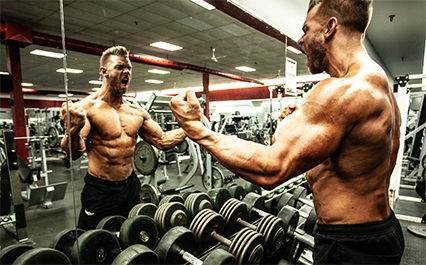
In general, “intensity” refers to an extreme degree of force, energy, or focus, executing something with purpose. When it comes to weight training, many lifters will refer to intensity as the difficulty of the training, rated by the amount of stress the body is put under, judged by the weight on the bar. This is a quantifiable measurement—something that has a numerical value assigned to it—but it doesn’t represent the other, more important, concepts of intensity: the internal factors.
Without the recognition of those internal factors, “intensity” is lacking a clear definition. For our purposes—“our” being those of us who want to reach a higher level of training intensity to improve their physique—we need to piece all the components together. Intensity should be regarded as a combination of internal and external factors, which will be different for everyone. It’s a comprehensive concept, where your output is peaked from a physical perspective with the target muscles working efficiently, and a mental perspective where your focus is zeroed in on your workout. After an intense session, your muscles are tight and tired, and you walk out of the gym feeling accomplished, knowing you left it all on the floor.

 Staying Focused
Staying Focused
The mental aspect of focus is a vital component of intensity. In the gym, you’re surrounded by many potential distractions, and your ability to ignore them and stay zeroed in on your work will dictate how intense your session is.
Taking breaks between sets is a necessary component of training, but it’s also a prime opportunity for athletes to let their mind stray from the work. Taking out your phone, engaging in conversation, wandering away from your equipment—if these are things you do on a regular basis between sets, you’re allowing your intensity to drop each time. People like to believe they’re great multitaskers or are able to shift their focus efficiently, but that’s hardly the case. When you let your mind move away from your work and onto something unrelated to your goal, it’s likely going to result in a longer break. Each time you do this, you need to work to get your mind back onto the task at hand, which may take more than a set or two. Think about the impact that has on your “intense workout.”
When you’re at the gym for a purpose, keep your mind on it. Use the time between sets to catch your breath, hydrate, and analyze your work. Is the right muscle activating? How challenging was the set? Do you need to adjust the weight you’re using? When you keep your mind focused directly on the task, not only will your intensity stay up, but your progress will improve by leaps and bounds.

Progressive Intensity
Keeping intensity high for long periods of time—like months and years—is challenging. The key word to remember when you’re in it for the long haul is “progressive.” Progressive overload training requires you to continually increase your workload in at least one aspect. There are many ways to progress your workouts, but most often, it’s accomplished by increasing weight or reps in an effort to make workouts challenging.
The body adapts fairly quickly to the stress of training, meaning the weight you were using becomes easier to lift. Keeping this stress the same will not only cause results to plateau but also drop the intensity of your sessions as the effort and energy demanded by the body lessens.
It’s normal for motivation and focus to drop from time to time, but this can hinder your intensity. If you’ve been lifting the same weight for the same amount of reps for months, you’re likely experiencing lower intensity workouts. Keep yourself motivated by progressing your workload, for workouts that continue to be challenging, mentally stimulating, and intense.
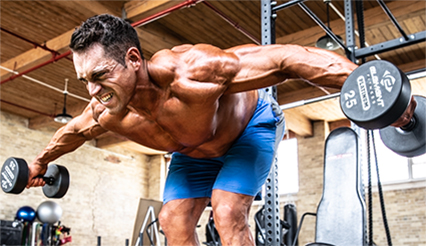
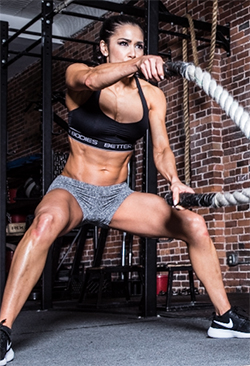 Go Beast Mode
Go Beast Mode
Intensity is a mix of inherent ability and learned skills, which can require a lot of practice. Some people may struggle to reach a level of true intensity in training, but the following approaches will get you moving in the right direction.
• Connect Mind to Muscle. You go to the gym with one mission—to train your quads/biceps/chest/delts. In order to fully complete this, and take your workout to a more intense level, you must have a strong mind-muscle connection. The ability to focus on the target muscle will ensure it’s doing the work, rather than allowing multiple other muscles to take over. When your mind wanders during a set, that connection can be lost, and soon the intensity of your session drops as the work becomes spread out. Not only does the mind-muscle connection ensure you’re working the right group, but it’s a surefire way to keep your focus zeroed in on your workout and not on what you’re doing next weekend.
• Come Prepared. This may seem pretty obvious, but setting foot into the gym without a game plan is like a hockey player going to a game without a stick. If you need to stop between exercises to figure out what you’re going to do next, wandering aimlessly around the gym debating your next exercise, your intensity level is going to drop by the minute. Rather, arrive with a clear program that details the exercises you need to do, along with the number of reps and sets. This way, you can move seamlessly from one to the next, keeping your focus and energy high through the whole session. Most importantly, keep it realistic! Don’t plan on hitting eight to 10 exercises for a muscle group in one session; as you’ll soon learn, volume doesn’t equal intensity.
• Keep Your Head in the Game. One of the key components of intensity is focus, so you need to enter the gym with one thing on your mind: training. It’s easy to get distracted if you let your focus drift, especially between sets. If you get sucked into conversation between sets, it’s guaranteed that your break will be longer than planned, causing your heart rate to drop and your mind to stray from the work. And, there goes your intensity.
• Stay in a Device-Free Zone. This one should be pretty simple—if your phone is a distraction, don’t have it accessible. You don’t need to be browsing social media, reading emails, or texting your friends between sets. As soon as you unlock your screen, your focus has shifted. Not only that, but we all know how much time can be lost on these things without you even realizing it. And, if you read something that spikes an emotion—such as a stressful email—good luck shifting your mind-set back to a solid workout. Dedicate your gym time as your personal time. The emails can wait an hour.
What Intensity Isn’t
Many athletes make the mistake of thinking they’re being super intense in the gym, based on the fact that they feel utterly exhausted after a session. Factors such as volume, duration, and frequency may keep you in the gym for a long time, but that doesn’t necessarily equate to intensity.
Volume is a quantity-based measure of training—how many exercises, reps, and sets are done in the course of a workout. Generally speaking, the higher the volume, the lower the load, as you cannot lift the same amount of weight for 20 reps as you do for 8. Keep in mind that you can incorporate high-volume sets within a standard workout, which has the potential to increase your intensity—when applied correctly.
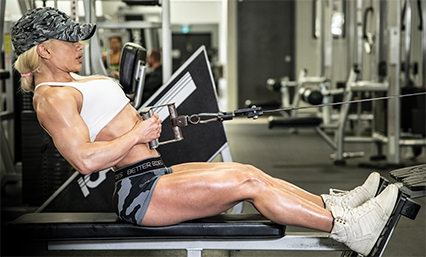
Duration and frequency refer more to time—specifically, to how long you spend in a session and how often you train over the course of the week. Training saps your energy, so the longer a session goes, or the more frequently you train, the more energy you’re going to use up. The resulting decrease in energy will make it hard to fully engage the working muscle, leading to less effective and intense workouts.
Obviously, there are cases where high volume, duration, and frequency are needed, and intensity can remain high. For example, athletes who compete in endurance events need to train their bodies to handle that load. Their workouts need to be long, and should be intense to get the most benefit. These athletes have trained for this, and their bodies are genetically built to work in this capacity.
The bottom line is that it’s difficult to maintain strong focus and high energy through frequent, long sessions. In most cases, you can get more benefit out of shorter, focused sessions, when you’re able to keep the intensity high. Remember, quality over quantity!
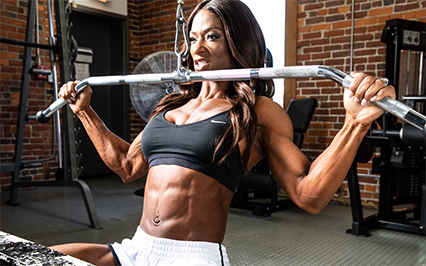
Do Not Overlook This
It may seem counterintuitive, but rest is imperative to your intensity. If you’re burning the candle at both ends, your mind and body will be exhausted, making it increasingly difficult to have highly energetic and mentally focused workouts. You always want to make sure you’re prioritizing your recovery to enable you to come back refreshed and strong every session.
Ditch the notion that rest is for the weak. If you want to truly make the most out of your workouts, and keep that intensity high, rest and recovery is non-negotiable. Prioritize getting enough sleep each night, letting muscle groups recover between sessions, and getting professional treatment to aid recovery.
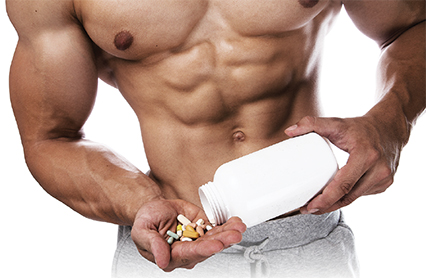
Supplementing for Intensity
Plenty of pre-workouts on the market claim to heighten the intensity of your training sessions, but some are more effective than others. For the physical aspect, a dose of L-citrulline malate boosts nitric oxide to get the blood flowing and flooding the working muscle. Nothing lets you know that you’re working the right muscle like a solid pump, which citrulline is known for.
For razor-sharp focus, add L-tyrosine to your shaker cup. This amino acid is a precursor for a number of neurotransmitters including dopamine. Increased dopamine levels will improve your concentration, keeping you focused on the task at hand—your training session. Look for a product with N-acetyl L-tyrosine, which is the most bioavailable option.
As a Muscle Insider reader, you obviously want to improve your physique in one way or another. You’re not going to settle for average, so your training sessions need to be anything but. Starting with the right nutrition and training plans as your base, and then adding intensity to each workout, will bring the results you’re looking for. Simply getting to the gym and going through the motions, checking exercises off your list, isn’t the recipe for success. Aim to make every workout intense, because you aren’t working towards the goal of being mediocre.
Click HERE to sign up for our free newsletter!



